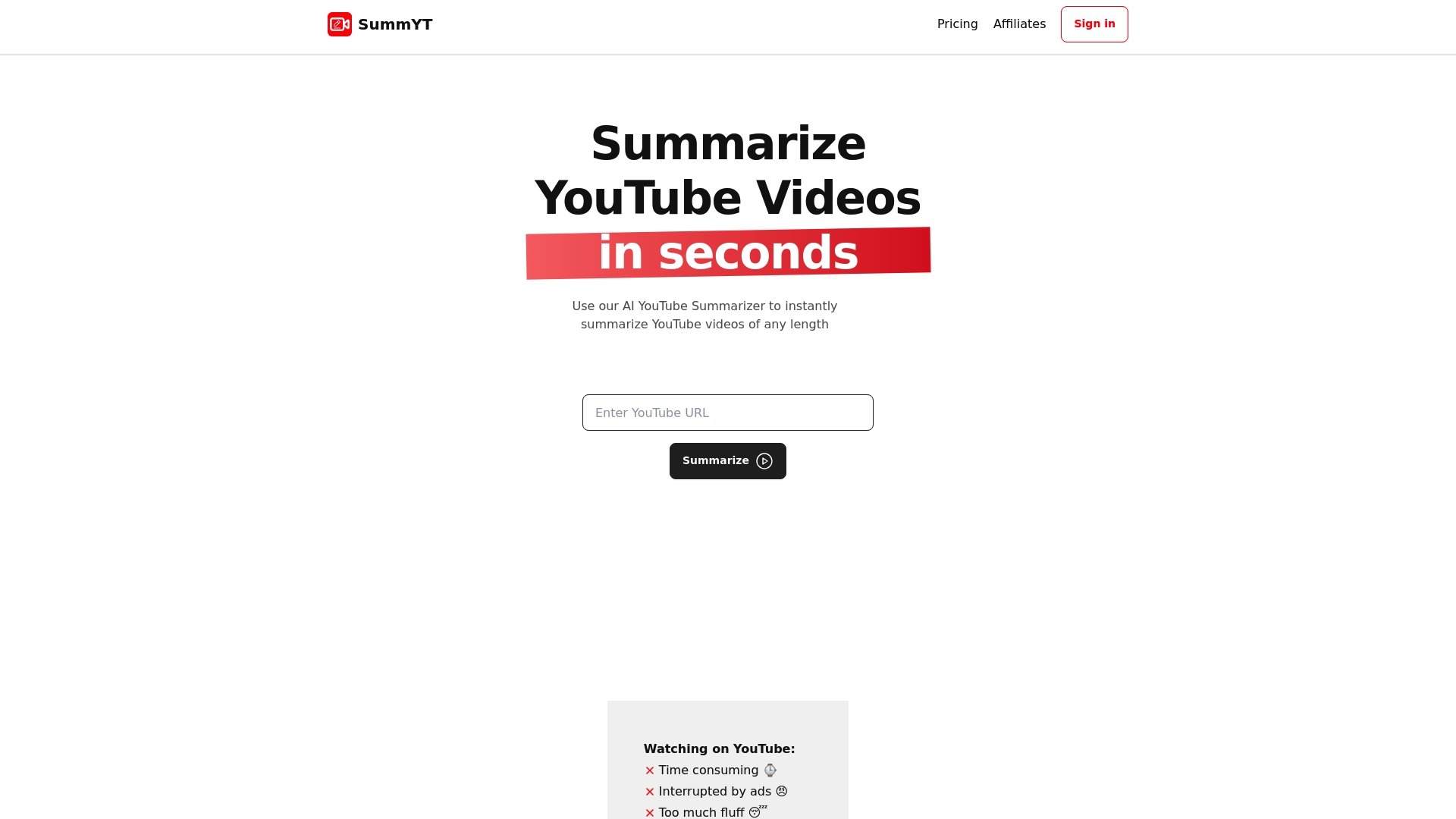Role of Summaries for Creators: Complete Guide

Did you know that over 80 percent of people admit to skimming online content instead of reading every word? With every scroll, summaries have become the secret weapon for quick understanding in a world flooded with information. They save precious time and help you zero in on the key messages hiding in complex material. Learning to craft strong summaries can give you an edge for studying, researching, or sharing ideas more clearly and efficiently.
Table of Contents
- Defining Summaries And Their Purpose
- Types Of Summaries Used By Creators
- Key Benefits For Content Creation Process
- Integrating Summaries Into Workflow
- Common Pitfalls And Effective Alternatives
Key Takeaways
| Point | Details |
|---|---|
| Purpose of Summaries | Summaries condense information, making it accessible and digestible for quick comprehension, enhancing engagement and retention. |
| Types of Summaries | Different summary types serve varied communication needs, from concept and context summaries to quick overviews, adapting to creators’ objectives. |
| Workflow Integration | Integrating summaries into the content creation process enhances productivity, streamlines information management, and allows for better decision-making. |
| Common Pitfalls | Creators should be cautious of over-relying on automation that may sacrifice nuance and accuracy; a balanced approach is essential for effective summarization. |
Defining Summaries and Their Purpose
A summary is a condensed representation of original content that captures the most essential information efficiently. According to Wikipedia’s definition of automatic summarization, summaries are computational subsets that distill the most important or relevant details from a larger body of information.
At their core, summaries serve multiple critical functions for creators and knowledge workers. They transform complex, lengthy content into digestible microcontent - small groups of words that allow quick comprehension. As research indicates, microcontent enables readers to rapidly understand the core message without investing significant time in processing extensive materials.
For content creators, summaries provide several strategic advantages:
- Enhance audience engagement by delivering information concisely
- Improve content accessibility for time-constrained readers
- Create alternative entry points into complex topics
- Support faster learning and information retention
Whether you’re a student, professional, or researcher, mastering the art of summarization can dramatically improve how you consume, process, and share information. Understanding the role of summaries in research can unlock new levels of productivity and knowledge management.
Types of Summaries Used by Creators
Content summarization is a versatile skill with multiple approaches tailored to different creator needs. According to research on summary generation, creators can leverage various summary types to efficiently communicate complex information.
According to technical documentation from Micro Focus, content summaries can be categorized into several distinct types:
- Concept Summaries: Extract core conceptual frameworks
- Context Summaries: Provide background and situational understanding
- Quick Summaries: Deliver rapid, high-level overviews
- Paragraph Concept Summaries: Distill key ideas from specific text sections
- Paragraph Context Summaries: Offer contextual insights within individual paragraphs
These summary types serve different communication objectives. Some are ideal for academic research, while others work perfectly for professional presentations or content marketing. 7 Types of Content Summaries You Need to Know provides deeper insights into how creators can strategically apply these summarization techniques.
Here’s a quick comparison of common summary types used by content creators:
| Summary Type | Main Purpose | Ideal Use Cases |
|---|---|---|
| Concept Summary | Highlight core ideas | Research Education |
| Context Summary | Provide background/context | Reports Presentations |
| Quick Summary | Offer fast overview | Social Media Briefs |
| Paragraph Concept Summary | Extract key section ideas | Editing Blog Writing |
| Paragraph Context Summary | Add situational insight | Technical Docs Proposals |
For modern creators, understanding and mastering these summary formats can dramatically improve information delivery, audience engagement, and knowledge transfer across various professional and creative domains.

Key Benefits for Content Creation Process
Content summarization transforms the content creation workflow by addressing critical challenges in information management. Understanding the role of summaries for professionals reveals how creators can dramatically enhance their productivity and strategic content development.
According to Wikipedia’s research on automatic summarization, summarization technologies help manage information overload by extracting key insights from large datasets. This enables creators to make more efficient decisions and streamline their research and writing processes.
Key benefits for content creators include:
- Rapid information synthesis and comprehension
- Reduced time spent on research and content preparation
- Improved ability to identify core themes and narratives
- Enhanced understanding of complex topics across multiple documents
- Streamlined content ideation and strategic planning
Multi-document summarization takes these advantages further. As Wikipedia notes, this approach allows creators to quickly familiarize themselves with information contained across multiple sources, creating comprehensive and concise information reports that serve as powerful content development tools.
Integrating Summaries Into Workflow
Workflow integration transforms how content creators manage and process information. Optimize Your Video Summary Workflow for Marketers highlights the strategic importance of systematically incorporating summaries into creative processes.
According to research from ClickUp, content creators can leverage executive summary templates to efficiently capture and communicate key insights. These templates provide concise overviews that immediately grab audience attention, streamlining content development and communication strategies.
Key strategies for effective summary integration include:
- Establishing consistent summary creation timelines
- Developing personalized template frameworks
- Creating standardized review and refinement processes
- Implementing adaptive feedback mechanisms
- Utilizing technology to automate repetitive summarization tasks
Research from an academic paper on Adaptive Summaries reveals an innovative approach to workflow integration. This interactive, concept-based summarization model learns from user feedback, allowing creators to develop increasingly personalized and precise summaries that evolve with their specific content needs. By embracing these adaptive techniques, professionals can transform summarization from a static task into a dynamic, intelligent workflow component.
Common Pitfalls and Effective Alternatives
Content summarization presents unique challenges that can derail even the most well-intentioned creators. Understanding the Advantages of Automated Content Summaries highlights the critical need for strategic approaches to avoid common summarization mistakes.
According to research on user-generated content, creators must be vigilant about maintaining quality and reliability. As Wikipedia notes, transforming content requires careful navigation between passive consumption and active participation.
Common pitfalls in content summarization include:
- Over-relying on automated tools without manual review
- Losing critical nuance and context during summarization
- Creating summaries that are too generic or surface-level
- Failing to adapt summaries to specific audience needs
- Neglecting to verify the accuracy of extracted information
Effective alternatives focus on a balanced approach. By combining technological tools with human expertise, creators can develop summaries that are both efficient and meaningful. The key is maintaining a critical eye, continuously refining summarization techniques, and understanding that no single method works perfectly for every type of content or audience.
Unlock the Power of Summaries with SummYT
The article highlights the struggle many creators and professionals face with information overload and the challenge of creating clear, concise summaries that retain essential context. Whether you are a student trying to grasp complex lecture content or a professional needing quick insights from webinars and trainings, the need for efficient summary strategies is clear. Terms like “microcontent,” “concept summaries,” and “workflow integration” emphasize the demand for tools that transform lengthy video content into actionable knowledge, reducing time spent on research and improving comprehension.

Save hours while enhancing your learning and productivity with SummYT, an AI-powered YouTube summarizer built precisely to address these pain points. SummYT automatically distills any YouTube video into clear, concise summaries and key takeaways without losing critical context. Whether you want to master the role of summaries for creators or implement effective summary workflows, this tool empowers you to stay informed and engaged without wasting precious time. Start using SummYT today and transform how you consume video content.
Frequently Asked Questions
What is the purpose of a summary in content creation?
A summary condenses original content into its essential points, allowing for quick comprehension and efficient communication of complex ideas.
What are the different types of summaries used by content creators?
Common types of summaries include concept summaries, context summaries, quick summaries, paragraph concept summaries, and paragraph context summaries, each serving different communication needs.
How can summaries enhance the content creation process?
Summaries help in rapid information synthesis, reduce research time, improve theme identification, and streamline content ideation, thereby elevating productivity.
What common pitfalls should creators avoid when summarizing content?
Creators should avoid over-relying on automated tools, losing critical nuance, producing generic summaries, failing to adapt to audience needs, and neglecting the verification of extracted information.




